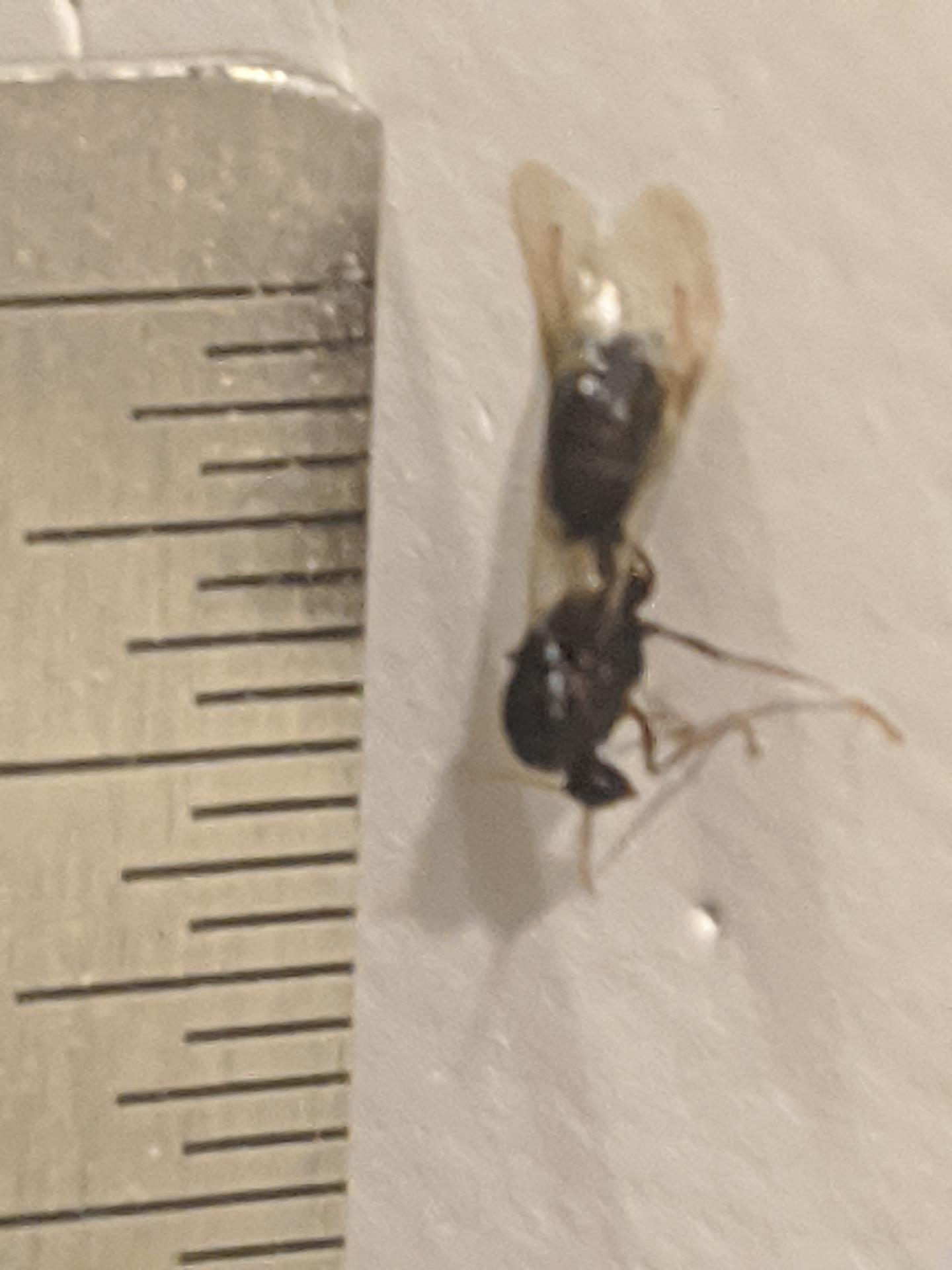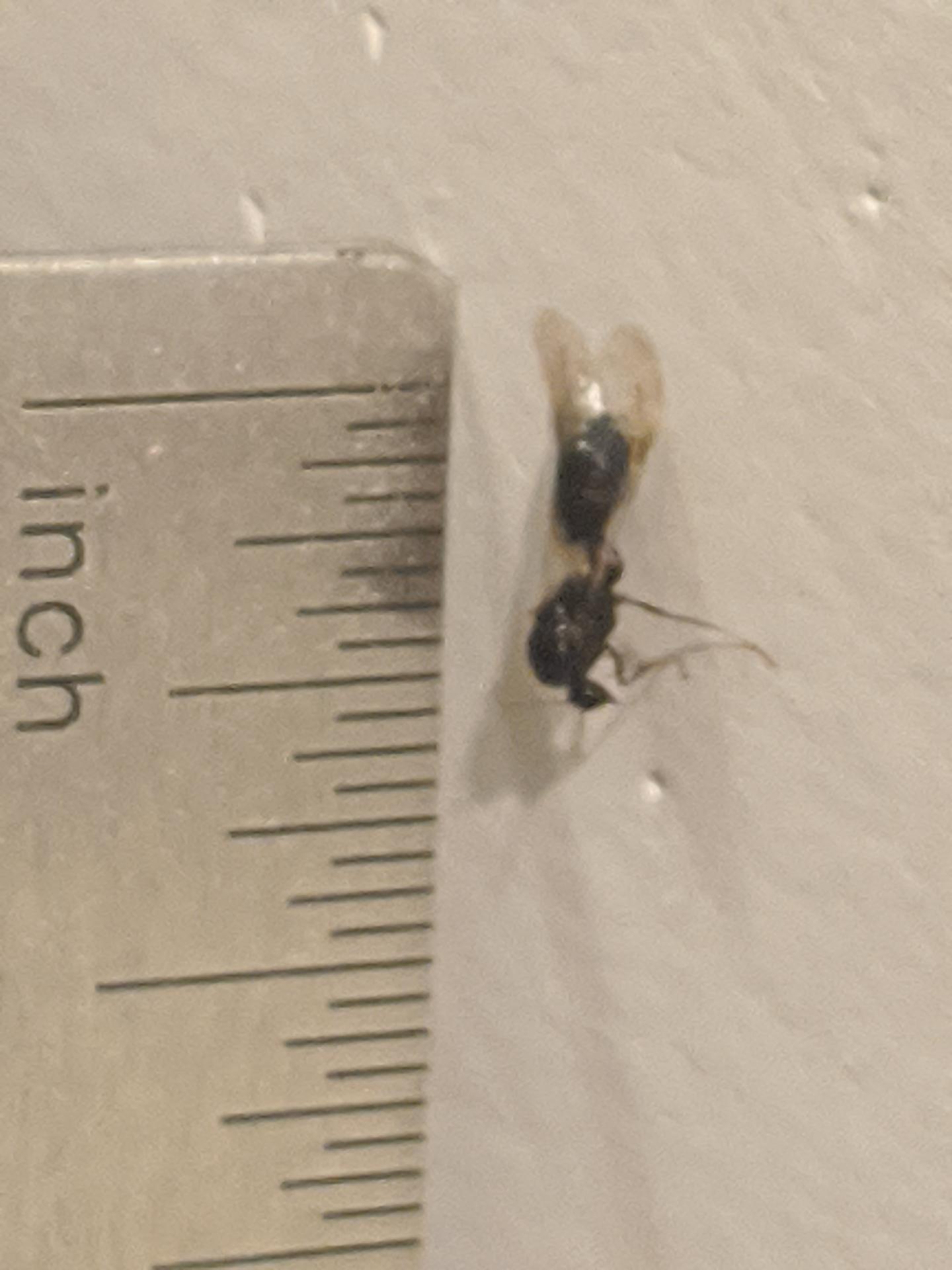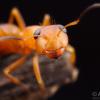It is the first day of spring here in Denver, Colorado and we just recently moved into a home built in 1961 (it is our first year here)
The basement has had a lot of spiders and other bugs in it since we moved in. Particularly the bathroom.
Today, we found a stream of these ants coming out of a hot water radiator in the basement bathroom (8' underground)
I think that the ants are coming down the wall and out of the sheetrock where there is an opening around the hot water heater. I don't see any emerging from the floor around the hot water line.
I don't have any ants anywhere else around the home and we are in the middle of a remodel so I have several walls open to the studs with no signs of insect infestation.
These ants aren't normal. they are small and nearly translucent. They are not the typical black ant that I normally come across in Denver.
The winged ones are about 5-8mm long (see pic) they are light brown with dark spots on their abdomen.
The non-winged ones are very very tiny (maybe .2-.4mm in length.
I am pretty sure that they are ants because of their crooked antenna, narrow waist, and smaller hind-wings.
I cannot find any photos online that match them. Does anyone know what these are?
I can't figure out where they are coming from, my best guess is that there is some honeycombing in my foundation walls- could the ants be entering the structure from underground? I cannot find a place on the outside of the house (brick) that they could be coming in at.
See pics!
1. Location (on a map) of collection:
Denver, colorado
2. Date of collection:
3-20-19
3. Habitat of collection:
basement bathroom, coming out of radiant heater, climbing up wall in a single file line.
4. Length (from head to gaster):
<1mm cannot measure
5. Color, hue, pattern and texture:
translucent brown with black spots on abdomen
6. Distinguishing characteristics:
wings, long body for small size.
7. Distinguishing behavior:
n/a
8. Nest description:
n/a in wall/coming out of foundation
9. Nuptial flight time and date:
probably 3-20-19 We have not seen them sooner.
[Images of ant]
gallery:
http://www.formicult...nt-closeup-web/
Pics:
http://www.formicult...eup-web/square/

[Images of nest]
n/a
[Images of habitat]
n/a

























